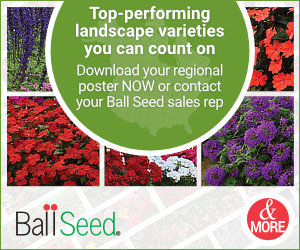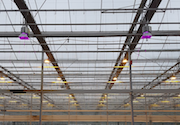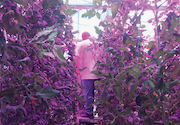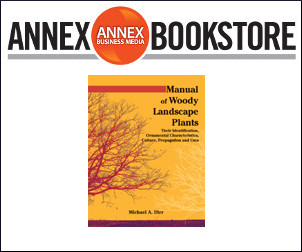| |
| |
 |
 |
| |
 |
|
@{mv_date_MMM d, yyyy}@ |
|
| |
 Standards are needed to determine the optimal intensity and colours of light, according to Rutgers Research, that could help improve the energy efficiency of horticultural lighting products.
» Read more...
Standards are needed to determine the optimal intensity and colours of light, according to Rutgers Research, that could help improve the energy efficiency of horticultural lighting products.
» Read more...
Canada is returning to the world’s largest fresh produce trade show, aiming to showcase some of the top innovations and fresh produce that the country has to offer.
» Read more...
This greenhouse vegetable producer has introduced a new product locator tool on their website to help consumers find their favourite products in-store.
» Read more...
|
| |
|
| |

Ball Seed® is your source for top-performing color you can count on. Download the latest THRIVE poster ... It’s your resource for plant recommendations for the Eastern and Western Canada regions. This handy poster features landscape products for landscape professionals – all available from your knowledgeable Ball Seed sales rep. As a bonus, the poster includes Top Tips for Landscape Planting Success, and you can learn about NEW Beacon® Impatiens with high resistance to Impatiens downy mildew. Download or request your copy today at
BallLandscape.com. |
| |
|
| |
 A significant number of research projects have focused on understanding how LED lights affect plant growth and development. These studies are important, but the next step is for growers to learn how their own varieties and greenhouse environment will react to the change. The best way to understand if LED is right for your operation is to trial it out on your own farm.
» Learn more
A significant number of research projects have focused on understanding how LED lights affect plant growth and development. These studies are important, but the next step is for growers to learn how their own varieties and greenhouse environment will react to the change. The best way to understand if LED is right for your operation is to trial it out on your own farm.
» Learn more |
| |
 This past winter, Harrow Research Centre worked on two innovative experiments using LED fixtures. Their research found that the wavelengths radiated by LEDs, and the light sensors that control fixture function, can transform how controlled agricultural producers manage their crops. In particular, they tested algorithm-controlled lighting and alternating red and blue wavelengths.
» Learn more
This past winter, Harrow Research Centre worked on two innovative experiments using LED fixtures. Their research found that the wavelengths radiated by LEDs, and the light sensors that control fixture function, can transform how controlled agricultural producers manage their crops. In particular, they tested algorithm-controlled lighting and alternating red and blue wavelengths.
» Learn more |
| |
|
| |

The sixth edition of what the Chronicle of Higher Education called “A Horticulture Bible” by Michael Dirr is a major revision. It features expanded descriptions of former entries, over 2,000 new species and cultivars, trademark names and patent numbers, as well as all species, subspecies and variety names verified using the GRIN taxonomic data base (germplasm resources information network) and other sources. The book is rich, accurate, substantive, and written in Dirr’s engaging style.
Learn More |
| |
|
| |

|
| |
| |








